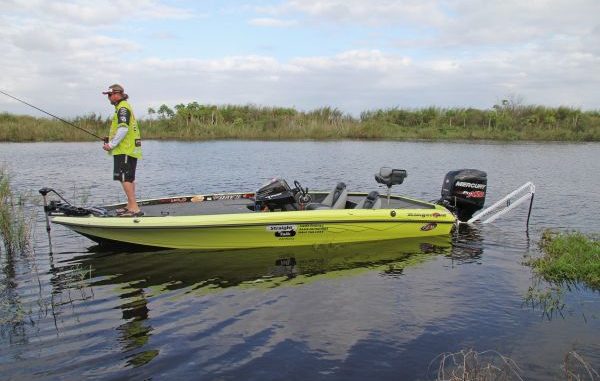
Bassmaster Elite pro Mark Davis said one of the most important aspects of controlled bed fishing is being able to anchor his boat quickly and quietly.
“Power-Poles are great because you can hunker down and get quiet,” Davis said. “You can let everything settle. Even if you can’t see the fish and he can’t see you, he’s still aware that you’re there.
“If you’re making noise or the boat’s rocking or you’re using the trolling motor — he’s aware.”
Florida’s J.T. Kenney, who competes on the FLW Tour has a cool trick for using an often-overlooked aspect of his Power-Pole shafts to his sight-fishing advantage. His strategy enables him to quickly stop and back up when he spots a bed fish, since reversing a trolling motor would blow out the spot and drifting over a fish would likely spook it.
Essentially, the Everflex spike affixed to a Power-Pole’s hydraulic arm will “give” for a smooth stop that won’t damage the transom. While the spikes deploy almost immediately, the boat continues forward until the spikes reach the end of their flexion and return to their vertical position.
When those spikes straighten out, they pull the boat back a silently, but Kenney takes this a step further: Just as the boat reaches a perpendicular position to the spikes, he quickly raises the Power-Poles and enables his boat to continue the backward momentum until he reaches a comfortable distance from the bed fish he spotted.
Kenney said the amount of backward drift depends on wind conditions. On calm days, he can flex his boat back up to 30 feet, while he may only gain 5 in a stiff blow.
Good thing is, he can either stake out and fish from his new distance, or reposition for a better approach. The bottom line is preserving the opportunity by silently reversing his forward motion.


